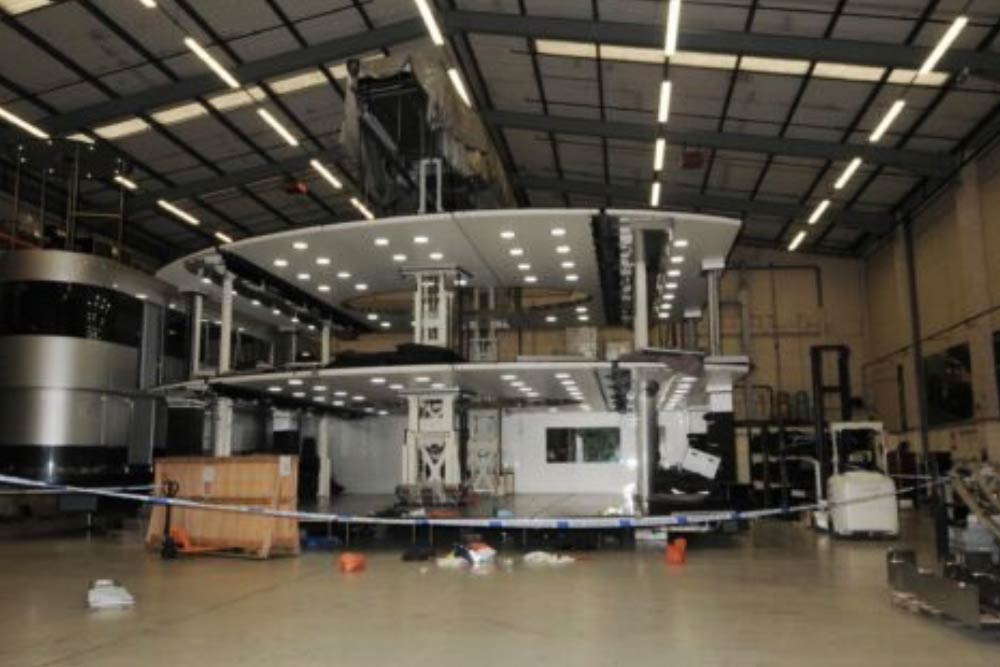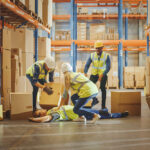
Several of 55-year old David Oldham’s colleagues could do nothing but watch in silence, when they saw him topple from the roof of a mobile building. The senior engineer had been performing a routine structural inspection for the McLaren Formula 1 racing team before the disaster happened. He was rushed to a local hospital, where he later died.
Falls from height accounted for nearly 25% of all workplace fatalities in the UK during the 2021-22 period. This makes them the most common cause of workplace death. Due to the risk involved, all employers have a legal duty to risk assess any work at height. As part of their risk assessment, the Hierarchy of Control for Working at Height must be applied.
A failure to do so, can have devastating consequences not just for an individual, but also the organisation.
The Consequences of Failure
If an incident, such as the one involving David were to occur at your own workplace, not only would it lead to unmeasurable suffering for the employee’s family and colleagues, but also lead to significant reputational damage and legal trouble for the employer.
This was the case for McLaren Services, which was investigated by the Health and Safety Executive (HSE) for the incident. It was found that while McLaren stated they had advised to stay two meters from the edge, there was no official documentation.
It was determined that the company had failed to perform a proper risk assessment, or put control measures in place to stop workers from falling at height.
As a result, the company was recently fined £650,000 and ordered to pay over £110,000 in costs as a result of the incident.
HSE inspector Saffron Turnell is quoted as saying: “It is very important that those in control of the work identify the risk, plan to eliminate it if possible, or where it is not possible, take appropriate precautions to safeguard workers and others. Good management will also include regular monitoring that the controls in place are keeping people safe.”
Applying the Hierarchy of Control: Working at Height
To control for the increased risk of injury or death, the Work at Height Regulations 2005 (WAHR) stipulates that all duties that involve working at height must be planned, supervised and ‘carried out in a manner which is so far as is reasonably practicable safe.’
The legal duties of employers require that they control the risks of the hazard of working at height systematically. The Hierarchy of Control for Working at Height provides guidance on how controls should be applied by level of priority. The application of controls ensures you’re compliant with the working at height regulations and helps keep your employees safe.
The Eight Hierarchy of Working at Height Control Levels
There are eight levels in the hierarchy of control measures for working at height. To help you gain an understanding of the hierarchy of working at height, we’ve taken a look at each level.
The hierarchy lists controls that should be taken by level of priority. If a significant level of risk remains after applying one level of the hierarchy, employees should then look at what measures can be taken at the next level.
Level One: Avoid Working at Height if You Can
The working at height regulations makes it clear that all efforts must be taken to avoid an activity that involves working at height. It may be possible to complete the task using extendable tools or by lowering an object to the ground before commencing work on it.
Whenever possible, work should be conducted at ground level.
Level Two: Training and Supervision
If work at height can’t be avoided completely, then training must be provided. Workers must know how to use all equipment safely and be supervised to ensure they do so. Supervisors must also receive training that gives them the skills to carry out their roles competently.
Level Three: Provision of Equipment
If there’s no way to avoid working at a height, then equipment must be used that allows for the task to be done in the safest way possible.
Equipment for working at height might include:
- Fixed scaffolding,
- Tower scaffolding
- Mobile Elevated Working Platforms (MEWP)s
- Fall arrest or restraint lanyards and harnesses.
Whatever equipment is used, training must be provided so staff know how to use it.
Level Four: Equipment Suitability
All equipment provided for working at height must be suitable for the task. Equipment should be strong enough to bear the weight of employees and tools. It must also be made stable so that it will not tip over.
A risk assessment should be conducted to identify any risks and determine if the work equipment can eliminate or mitigate the risks as far as is reasonably practicable.
Level Five: Equipment Inspection
Any equipment used for work at height should be regularly inspected to ensure that it remains in good working order. Pre-use checks need to be done daily. More involved inspections and maintenance should be carried out periodically by professionals who are competent to complete the task. Inspections should be conducted in accordance with the standards BS EN 365 and BS 7883:2019.
Level Six: PPE and Protection from Falling Objects
At the lower levels of the hierarchy, we have personal protective equipment or PPE and measures to protect from falling objects. PPE requires the user to take measures to use the equipment safely. This can include harnesses or hard hats, which will protect users’ heads from falling objects.
Level Seven: Safe Environment
Strong winds, rain, ice or fog can dramatically increase the risks of working from height. In some environments, there may be hazardous obstacles, such as electrical power lines or telecommunications cabling. These need to be taken into consideration. If the environment is unsafe, then the work should not be attempted.
Level Eight: Emergency and Rescue Plans
Despite the best planning, training and provision of suitable fall-prevention equipment, accidents can happen. The last level of the Hierarchy of Control: Working at Height, requires that emergency and rescue plans be developed. All staff must be trained on what to do if an emergency arises. Rescue equipment should be on-site and staff should receive suitable training on how to use it.
The Benefits of Working at Height Training
If you’re an employer, you have a duty to protect your staff from accidents like the one that David Oldham experienced when working for McLaren Services. Ensuring you don’t get caught out by disaster is simple and the legal duties are clear: conduct an adequate risk assessment and put in place appropriate risk controls.
Completing a working at height course yourself will also allow you to become familiar with the relevant health and safety legislation. You and your employees can gain skills to make working from height as safe as possible.
Sign up for our Working at Height training course so you can learn how to effectively implement the Hierarchy of Control for Working at Height. Our courses can be taken online at any time so there really isn’t an excuse for not doing the training. Don’t let any of your team members become one of the fatalities that could have been avoided!























































































































































































































































































































































































































































































































































